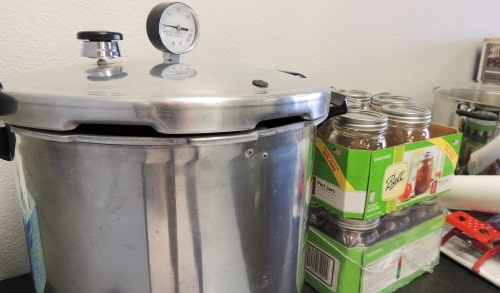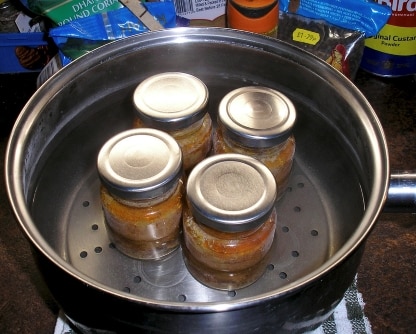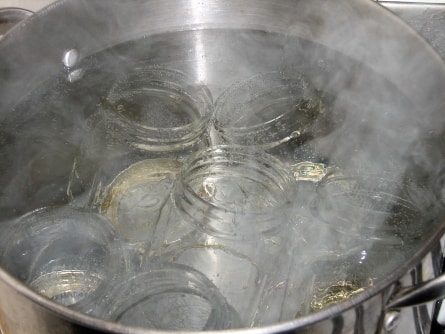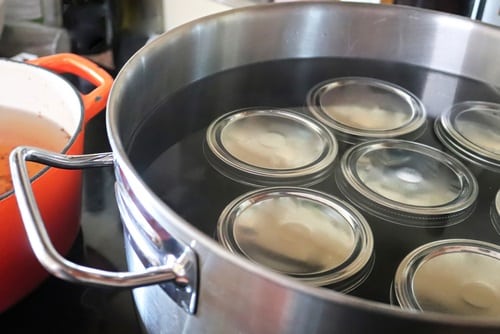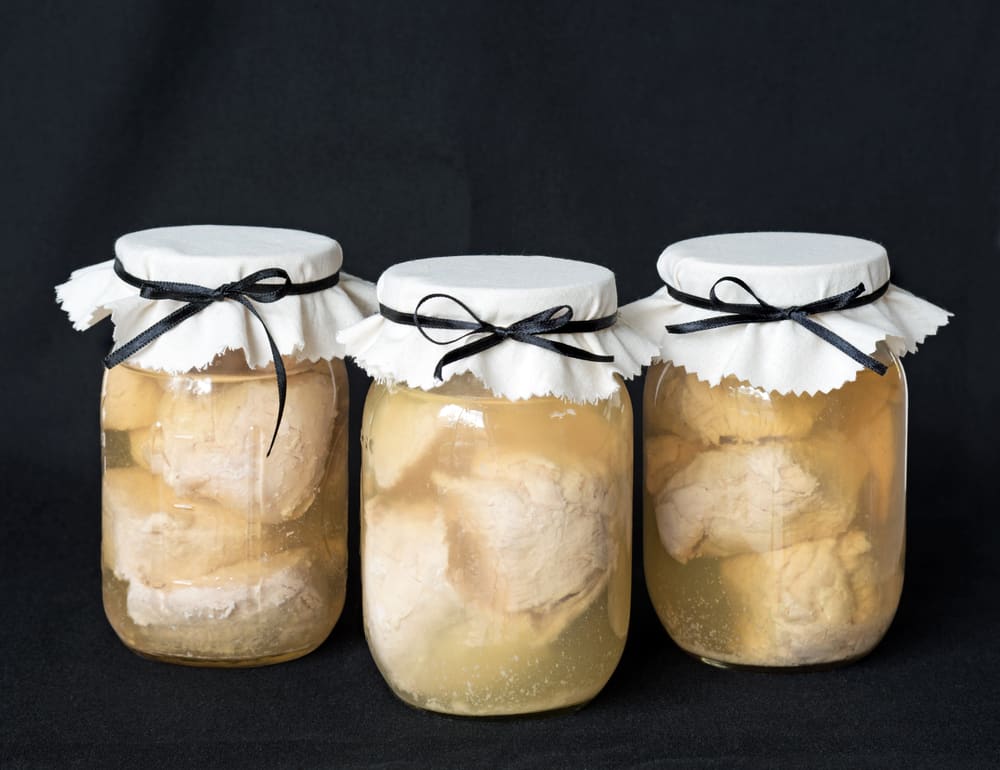
Canning is a process through which a person can preserve food inside a can/jar for a long period.
Before canning, you have to consider two things, whether the food you want to can is a low acid food or high acid food.
Low acid foods, for instance, meat, most vegetables, soybeans, tofu, cabbages, beets, lentils, etc. have a pH higher than 4.6. These foods are NOT safe to can without a pressure canner.
Foods that have a pH lower than 4.6 are called high acid foods. These types of foods include jams, jellies, many fruits, sugar syrups, and pickles. These foods are safe to can without a pressure canner provided you take some precautions.
Basically, there are three ways to can food:
According to the United States Department of Agriculture (USDA), you can only use a specialized pressure canner to can low acid foods. Any other type of canning may very end up harming your health.
Botulism is a big risk here. That’s because only a pressure canner can get temperatures that are over 240 degrees Fahrenheit. Low acid foods can produce bacteria called clostridium botulinum.
If you use a pressure cooker to can such foods, for example, it will only get to a maximum temperature of 212 degrees Fahrenheit which can kill the bacteria but it will leave the spores.
These can produce a deadly toxin called the botulism toxin. Only a pressure canner that can produce temperatures higher than 240 degrees Fahrenheit can kill both the bacteria and the spores.
However, for high acid foods, you can use a pressure cooker or a pot. The only difference between the two is the time required. Because the pressure cooker produces higher temperatures, the canning time required is much lower.
The Process Of Canning Broth Without Pressure Cooker
If you don’t have a pressure cooker at home, you might be thinking about using the water bath canning to preserve your broth. Please don’t! This is very dangerous and you or your family may end up becoming very ill.
Broth just doesn’t contain enough acid to prevent the multiplication of botulism organisms.
The video below shows the traditional way to can broth.
Warning: Pressure canning is more effective to kill the botulism potential. The traditional canning broth method mentioned is NOT a scientifically approved method. Try at your own risk!
You can preserve a high acid broth (such as bone broth with vinegar) through water bath canning by following these steps:
- Cleanliness is everything in canning. Make sure your kitchen is perfectly CLEAN.
- Make sure there are no imperfections, cracks, or chips on the jars. They create pockets and pockets don’t allow you to have a perfect seal.
- Sterilize your jars and caps by placing them in a pot of boiling water for 10 minutes.
- Take them out and clean the rim of your jars with a paper towel dipped in vinegar.
- Make sure your broth is not cold or at room temperature. Heat it to boiling point.
- Put your high acid broth inside the jars immediately. You don’t want the jars to cool off.
- Seal the jars with the caps properly. Make sure not to overdo it.
- Place the jars inside the pot. The water inside should be enough to completely submerge them.
- The jars must be boiled for 90 minutes. Make sure to flip the jars halfway through the boiling process.
- Take them out and let them cool for an hour.
- Try applying pressure on top of the lid. If nothing pops then your jars are properly sealed. If not, you will have to repeat the process once more.
- Make sure to follow a certified acidic recipe whenever you are trying to can your food in this manner. Your family’s safety is in your hands!
If you are looking for a SAFE method, try PRESSURE CANNING broth as per the videos below!
